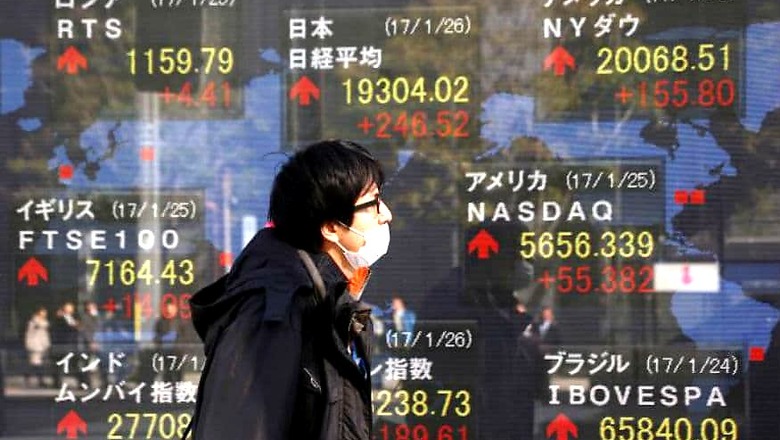
views
Hong Kong: Asian markets posted gains on Tuesday as better than expected Chinese trade data suggested a rebound from the economic devastation wrought by the coronavirus pandemic.
China has largely brought the disease under control within its borders since the COVID-19 outbreak first emerged in the city of Wuhan late last year.
But it came at the cost of drastic measures that shuttered much of the economy and cordoned off tens of millions of people at the epicentre of the outbreak.
With much of the country returning to work and travel restrictions eased across industrial hub Wuhan, Tuesday's data beat market expectations.
Exports fell 6.6 percent and imports dropped 0.9 percent in March on a yearly basis, according to Customs figures — falls that were well below the 10 percent or more forecast by a Bloomberg survey of economists.
But Julian Evans-Pritchard of Capital Economics warned "the worst is still to come" for China's export businesses, with more economic headwinds likely in the months ahead as the world battles the coronavirus outbreak.
Investors will now await the release of quarterly GDP figures on Friday, with forecasters predicting a 6.2 percent contraction.
Regional bourses had already moved into positive territory before the results were announced.
Tokyo was up 1.9 percent, Shanghai climbed 0.7 percent and Hong Kong returned from a four day break to rise 0.6 percent in morning trade.
Sydney was up 1.0 percent despite the forecast doubling of Australia's unemployment rate to 10 percent in the second quarter and a National Australia Bank survey showing record low business confidence.
The Australian dollar has also rallied from last month's 18-year lows with a slowdown in new coronavirus infections and signs of returning industrial activity in China, said AxiCorp chief market strategist Stephen Innes.
"The combination of early containment and quality health care system put Australia head and shoulders above many," he added.
Investors shook off a negative lead from Wall Street overnight ahead of earnings reports from major US banks.
That data will be among the first to show the effects of the near-overnight economic shutdown in the country worst affected by the pandemic.
Nearly 600,000 people have tested positive for the disease and more than 23,500 have died across the US.
Some market watchers say the US economy could bounce back relatively quickly once the coronavirus situation is managed, but others warn of a more protracted slowdown due to the risk of second-wave outbreaks.
Oil markets were higher after US President Donald Trump claimed producers were considering output cuts of 20 million barrels per day — more than double the figure publicly announced.
Producers had thrashed out a compromise deal on the weekend to cut production by nearly 10 million barrels per day from May.
Prices had been battered after the COVID-19 outbreak sent demand off a cliff, with a Saudi-Russian price war compounding the crisis.
A roller-coaster session on Monday saw West Texas Intermediate futures rise nearly eight percent in early Asian trade before closing in negative territory, with investors still nervous about a supply glut.
"Short of the US setting a timetable for reopening their economy in full, it is hard to construct a case where oil will sustain substantial gains from here," said OANDA's Jeffrey Halley.
European benchmark Brent was up 1.7 percent and WTI rose 1.3 percent on Tuesday.(



















Comments
0 comment